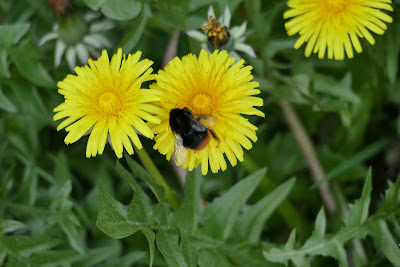My last blog post was March 23rd 2020 .. that very evening the UK Government placed the country in Lockdown due to Covid-19. All travel restricted to essential travel only .. the mantra "Stay at Home, Protect the NHS, Save Lives" becoming the Uber message of the proceeding weeks. It would be perhaps trite and a more than a little pointless to say that we are now living through exceptional times.
Three weeks on and we are sitting in the living room, watching the @folkonfoot #FrontRoomFest. Kris Drever's doing the last song of his set. A is finishing her knitted blanket and I'm wading through the many photographs I have taken over the last three weeks of COVID-19 Lockdown. We are safe and well
 |
| Kris Drever, Folk on Foot "Front Room Festival" April 13th 2020 |
Folk on Foot
Many of these photos will have been taken of the garden invertebrates; some old friends, some new friends as yet to be named.
The rest of these photographs have been taken en route of our "one daily exercise" walks. Walking out to the local chalk downs, or the follow down the road to Hazleton Common for our extended fix of #NaturalHealthService.
Blessed with living within close easy access to the countryside, we have not forgotten how tough it must be for friends and family, locked down in cities both here and abroad, and not seeing any end to this crisis as yet.
With the weather being exceptionally dry and sunny over this period, I have started to make best use of the Field Guide to the Bees of Great Britain and Ireland (Falk, S. & Lewington, R. 2017 edition). This book was gifted to me by a very thoughtful friend two summers ago, but to date had remained little used - whilst I explored and obsessed over the hoverflies that visited the garden.
 |
| Apis mellifera |
 |
| Andrena nigroaenea |
 |
| Andrena cineraria |
 |
| Bombus lapidarius |
 |
| Osmia bicornis |
I have also welcomed the return of some of my favourite mini-beasts to the garden (their special place in my heart well documented elsewhere in this Blog).
 |
| Bombylius discolor |
 |
| Bombylius major |
 |
| Bombylius discolor on Primula veris |
Two new bugs were also added to the garden list in the form of
Rophalus (Rophalus) subufrus and
Corizos hyoscyami, whilst
Coccinella septumpunctata and
Vespula germanica made their first appearances of the year. Brimstone (
Gonepteryx rhamni) reappeared bringing with it tidings of hope and promise.
 |
| Rophalus (Rophalus) subufrus |
 |
| Corizos hyoscyami |
 |
| Coccinella septumpunctata |
 |
| Vespula germanica |
 |
| Gonepteryx rhamni |
Eristalis pertinax was recorded in the garden for the first time, having achieved a suitably detailed set of photographs to allow its successful identification.
 |
| Eristalis pertinax |
On a morning's round trip to Catherington Down we were reacquainted with the parasitic toothwort (
Lathraea squamaria) growing at the base of an aged sycamore (
Acer pseudoplatanus) within Catherington Lith. In total 35 spikes were noted of this very intriguing species.
 |
| Lathraea squamaria |
At Hazleton Common we encountered our first amphibians of the year, with tens of palmate newt (
Lissotriton helveticus) being observed in the three small ponds despite the turbidity of the water.
 |
| Lissotriton helveticus |
 |
| Aglais io |
 |
| Bombylius major |
Crossing the horse paddocks, on our way to Catherington Down we watched a small flock of Mediterranean gull (
Larus melanocephalus) flexing their hormones with many displays and mating attempts noted.
 |
| Larus melanocephalus |
Catherington Pond produced sightings of common frog (
Rana temporaria) tadpoles and
Helophilus pendulus.
 |
| Rana temporaria |
 |
| Helophilus pendulus |
 |
| Dactylorhiza fuchsii Parsonage Green |
 |
| Macroglossum stellatarum Green Lane |
We are certainly very fortunate to be able to experience such bio-diversity within our immediate local landscape at the best of times. Under the severe stress of this Covid-19 Lockdown, I value ever more so the #NaturalHealthService, for helping to sustain and maintain our mental-health well-being.
However, it is beyond necessary to fully thank the NHS health workers, and Care-workers on the front-line risking their own health to protect, promote and provide health and welfare to the sick and vulnerable: Thank you.
To the shop assistants, delivery drivers, farmers, warehouse workers and Post Office workers who are all working their a*ses off to ensure that we have the food, and the small luxuries to sustain us during this difficult time. Thank you.
Blessed Be




